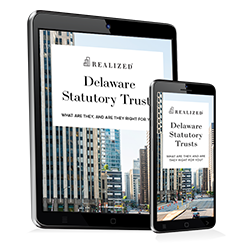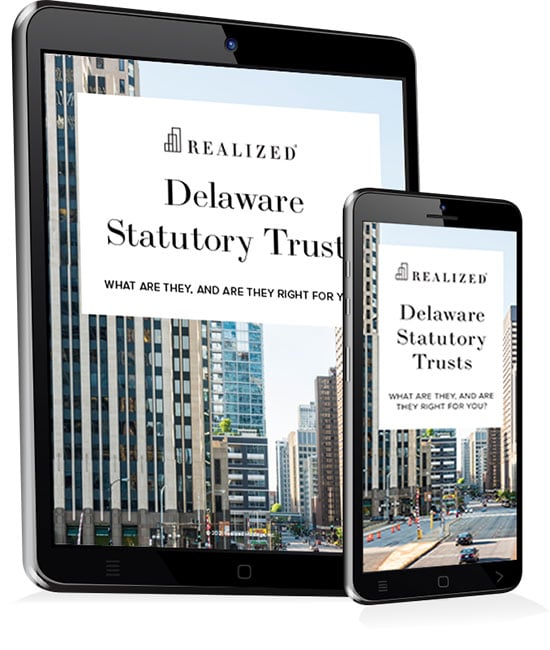
As you become a more experienced investor, you may encounter more advanced strategies and vehicles such as the Delaware Statutory Trust (DST). This vehicle may offer features that differ from those found in portfolios composed solely of directly owned real estate. This leads to the question: Can DSTs replace traditional real estate ownership? The answer is more complex than a simple yes or no. Below, Realized 1031 has shared an insightful article discussing the nuances. Keep reading to learn more.
Understanding Delaware Statutory Trusts
A DST is an investment vehicle that holds underlying income-generating properties. Investors enter a DST by acquiring fractional interests. As the DST assets earn, the income is distributed to the investors at values proportional to their interests.
DSTs have a distinct structure where only the DST sponsor manages the underlying property’s operations. This results in a passive ownership experience for investors who may prefer to limit their involvement in day-to-day operations.
Because multiple investors pool capital within a DST, these structures may invest in large-scale properties such as:
- Commercial Centers
- Large Apartment Complexes
- Logistics and Warehousing Facilities
- Hotels and Hospitality Establishments
DSTs are also used in certain 1031 exchange transactions. While DST interests are not classified as real property, Revenue Ruling 2004-86 may allow them to qualify for like-kind exchange treatment under specific circumstances. This may enable investors to defer capital gains taxes, subject to IRS rules and individual tax situations.
DST vs. Traditional Real Estate: Key Differences
Given the distinct structure of DSTs, they have some key differences when compared to traditional real estate. Here are some of note.
- Ownership: Traditional real estate usually means direct ownership of the asset. Meanwhile, you own fractional interests in a DST. You have an indirect ownership of the underlying properties.
- Control and Management: DSTs are structured to be passively managed by a sponsor, relieving individual investors from day-to-day operational responsibilities. Meanwhile, traditional real estate generally requires you to be more involved in the daily operations and major capital decisions of your property.
- Liquidity: DSTs are generally subject to a fixed holding period that’s usually between five to seven years. Traditional real estate can be sold at any time, but a full asset sale may take a long time.
- Responsibility: DST investors don’t have any landlord duties, nor are they required to take part in the maintenance of the property. Meanwhile, direct owners of real estate often have full responsibility as landlords and must comply with relevant landlord-tenant regulations.
- Types of Assets: Direct real estate ownership may limit investors to properties they can individually acquire and manage. Being part of a DST may offer access to a broader range of institutional-grade assets, depending on the trust’s structure and capital base.
Common Considerations and Challenges With Traditional Real Estate Ownership
While traditional real estate remains a widely used investment approach, it comes with certain considerations and limitations that may not align with every investor’s objectives or capacity for active involvement.
1. Direct Involvement
Traditional ownership typically requires hands-on management. You are responsible for key decisions such as tenant selection, property maintenance, and capital improvements. This level of control can be beneficial for those seeking to influence the performance of their assets directly. However, some investors may find these responsibilities too burdensome, especially as they near retirement. These types of investors may want a portfolio that has lower management demand.
2. Limited Diversification
Direct real estate ownership typically involves investing in a limited number of properties, which can result in asset concentration. Building a diversified portfolio—across multiple property types or geographic markets—requires significant capital and management resources. As a result, individual investors may find it more difficult to achieve the same level of diversification as large institutions or professionally managed funds.
3. Tax Implications
Selling a property outright can trigger capital gains taxes and depreciation recapture. These tax liabilities may significantly reduce the net proceeds from a sale and affect overall returns. While tax deferral strategies like 1031 exchanges are available, they come with strict compliance requirements and may not suit all investors or circumstances.
Common Considerations and Challenges with DST Ownership
Delaware Statutory Trusts (DSTs) offer an alternative structure for real estate ownership, often used by investors seeking passive management and potential tax deferral through 1031 exchanges. However, DSTs also come with specific considerations that may not align with every investor’s preferences or investment strategy.
- Lack of Control
Investors in a DST hold a beneficial interest in the trust, not direct ownership of the underlying real estate. This means decision-making authority—such as lease negotiations, property management, and timing of asset sales—is handled entirely by the DST sponsor or trustee. For investors accustomed to managing real estate directly, this lack of control may be a significant departure. - Illiquidity
DST interests are generally illiquid. There is typically no active secondary market for selling DST shares, and investors may need to hold the interest for the full term of the investment, which can range from several years to a decade or more. Early exit options, if available, may be limited and could involve a discount to the original investment. - Fees and Cost Structure
DSTs often include multiple layers of fees, such as acquisition fees, asset management fees, and disposition fees, which can vary by sponsor. These fees can reduce the net income distributed to investors and may impact overall returns. Investors should review offering documents carefully to understand the full fee structure. - Limited Flexibility for 1031 Exchange Timing
While DSTs are frequently used in 1031 exchanges, timing can be a challenge. Investors must identify and close on replacement properties within IRS-mandated deadlines (45-day identification and 180-day closing periods). Because DSTs are pre-packaged offerings, availability and fit may not always align with an investor’s exchange timeline or objectives.
How DSTs May Complement a Real Estate Portfolio
DSTs (Delaware Statutory Trusts) are structured to address some of the operational and diversification challenges associated with direct real estate ownership. Including DSTs in a portfolio may offer certain features that align with specific investment strategies and needs.
- Passive Involvement: For those who are near retirement or those who want less direct involvement in the day-to-day operations., DSTs may help ease the burden of management while still providing potential cash flow.
- Access to Diversified Real Estate: DSTs often invest in institutional-grade properties across multiple asset classes and geographic regions. This structure may provide investors with exposure to a broader real estate portfolio than they might achieve through direct ownership alone. Diversification, however, does not eliminate the risk of loss.
- Tax Benefits: 1031 Exchange Eligibility and Potential Tax Deferral
- DSTs are commonly used in like-kind exchanges under Internal Revenue Code Section 1031, which may allow investors to defer recognition of capital gains taxes when selling qualified real estate. Additionally, DST interests may be eligible for a step-up in basis at death, subject to current tax laws.
Balancing Direct Ownership and DSTs
DSTs may serve as a complement or partial replacement for directly held real estate, particularly for investors seeking to transition to a more passive strategy. However, DSTs are not suited for those who want to retain control over property-level decisions or seek active management opportunities.
Portfolio decisions involving DSTs should be made based on a thorough evaluation of investment goals, tax considerations, risk tolerance, and overall financial planning needs. A blended strategy that includes both DSTs and traditional real estate may align with some investors' objectives, but individual circumstances will vary.
Wrapping Up: Should You Replace Real Estate With DSTs?
Replacing an entire portfolio of traditional real estate with DSTs is not inherently advisable for all investors. Each structure—direct ownership and DST participation—offers distinct advantages and limitations. The right mix depends on an investor’s goals, risk tolerance, tax strategy, and desired level of involvement. Those who are near retirement or want a less active role may find DSTs particularly appealing due to their passive income potential and 1031 exchange compatibility. You enjoy continued real estate exposure without the burdens of direct property management.
The tax and estate planning information offered by the advisor is general in nature. It is provided for informational purposes only and should not be construed as legal or tax advice. Always consult an attorney or tax professional regarding your specific legal or tax situation.
Article written by: Story Amplify. Story Amplify is a marketing agency that offers services such as copywriting across industries, including financial services, real estate investment services, and miscellaneous small businesses.
Sources:
https://www.investopedia.com/terms/s/stepupinbasis.asp
https://www.irs.gov/irb/2004-33_IR
https://smartasset.com/investing/delaware-statutory-trusts-dsts



